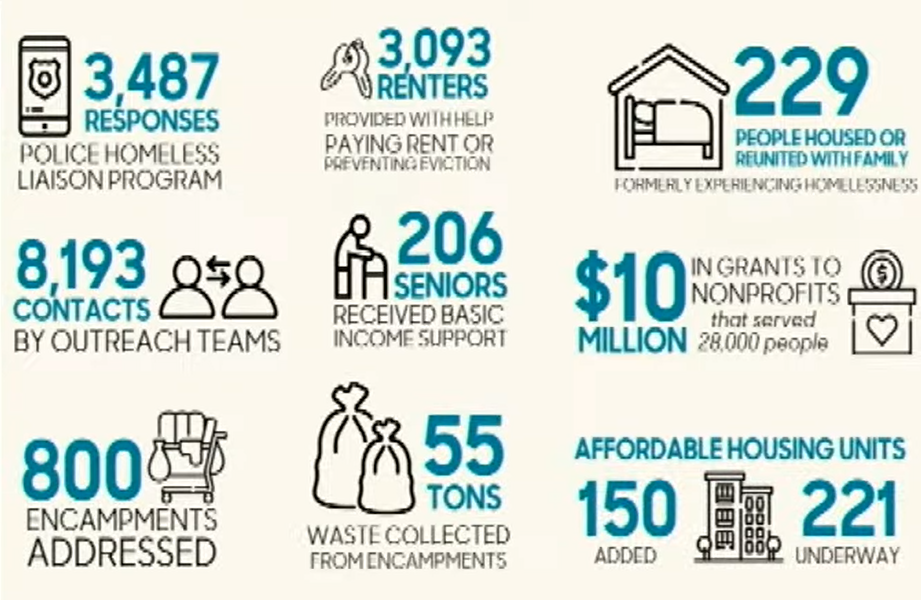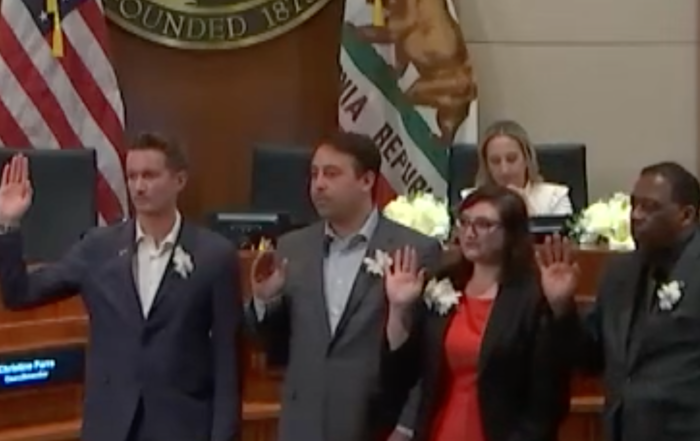The homelessness crisis is still being acknowledged in at least one Westside city.
The Santa Monica City Council passed a motion unanimously Tuesday night to extend the Local Emergency in the city on the issue of unhoused residents for another year. The previous declaration was set to expire at the end of the month, but will now be in effect until May 31, 2025.
Along with the motion for the extension was an update from the city’s Housing Department on the efforts to tackle homelessness in the city of Santa Monica, efforts for which the city spent approximately $73 million in fiscal year 2022-23. The statement declaring a local emergency has removed obstacles that prevent these programs from being implemented in the urgent manner the situation requires.
In declaring the issue an emergency, the city relaxed rules to help expedite the contract process with important providers like the Salvation Army’s 311 Response Team and loan commitments and allowed for quick implementation of program changes, according to Housing and Human Services Director Heather Averick.
“Declaring a local emergency on homelessness in 2023 was critical in accelerating new programming and removing barriers to building affordable housing,” Averick said.
She also argued that the Emergency was still necessary as the 2023 homeless count in Los Angeles’ Service Planning Area 5 — which includes Santa Monica — increased by 45 percent from 2022.
Despite the seemingly endless nature of the homelessness crisis, the city made tangible progress in helping its unhoused residents, highlighted in a video with several testimonies from formerly unhoused residents. Among the milestones highlighted by the Housing and Human Services Department was:
- 151 affordable units were added to Santa Monica’s housing stock through projects such as The Laurel, with 221 in the process of being created through projects like the Berkeley Station affordable housing complex
- 206 seniors received basic income support through programs like the Preserving our Diversity (POD) program
- 3,093 renters were provided with rental assistance or eviction prevention
- Around $10 million in grants was awarded to non-profits through the Human Services Grant Program
- 229 people formerly experiencing homelessness were housed or reunited with family through programs such as the Pathway Home interim housing program
Councilmember Christine Parra wanted to know more about Santa Monica’s shelter program, colloquially known as SAMOSHEL. Parra noted that the shelter was sitting at just a 58 percent occupancy rate, and wanted to understand why that number wasn’t higher.
While Averick acknowledged there was still work needed to make the shelter a more appealing place for those looking for privacy, some of the beds in the shelters are reserved for different city bodies that could potentially interact and work with unhoused residents such as SMPD and city outreach teams.
“We are working on furnishing it in a way that offers people more privacy,” Averick said.
Something happening outside the city that drew some concern was a case centered around homelessness policies in the United States Supreme Court. The city of Grants Pass is appealing a decision made in Martin v. City of Boise, which held that criminalizing unhoused residents who can’t find shelter for sleeping in parks and other public places was a violation of the Eighth Amendment, which protects against “Cruel and unusual punishment.”
If the decision — which is expected in late June — upholds the original ruling, city staff emphasized the importance of getting unhoused residents into temporary housing.
“[It] could affect everything that we are talking about,” City Attorney Douglas Sloan said.
Councilmember Caroline Torosis had concerns about the behavioral aspect of dealing with the unhoused. Torosis pointed out that a study showed that the city urgently needed “Crisis stabilization.”
She also noted that the city does not have a single in-patient mental health bed, echoing a concern that Westside cities as a whole must confront: mental health facilities are lacking.
“I think that is absolutely a shame,” Torosis said of the lack of mental health beds. “We know that we have a mental health crisis, so I would support any resources we can bring to bear.”
Housing and Human Services Administrator Natasha Kingscote said that the department will return to the council with a more long-term plan for bolstering the behavioral health treatment aspect, working with the Westside Council of Governments (COG), but the resource problem is still present.
“There’s not enough on the Westside,” Kingscote said of mental health facilities. “All of those facilities are on the east side of the county.”
Discussions on the city’s homelessness programs will continue with discussions on the Homelessness Strategic Plan, which is expected in early 2025.
Stay informed. Sign up for The Westside Voice Newsletter
By clicking submit, you agree to share your email address with Westside Voice. We do not sell or share your information with anyone.








